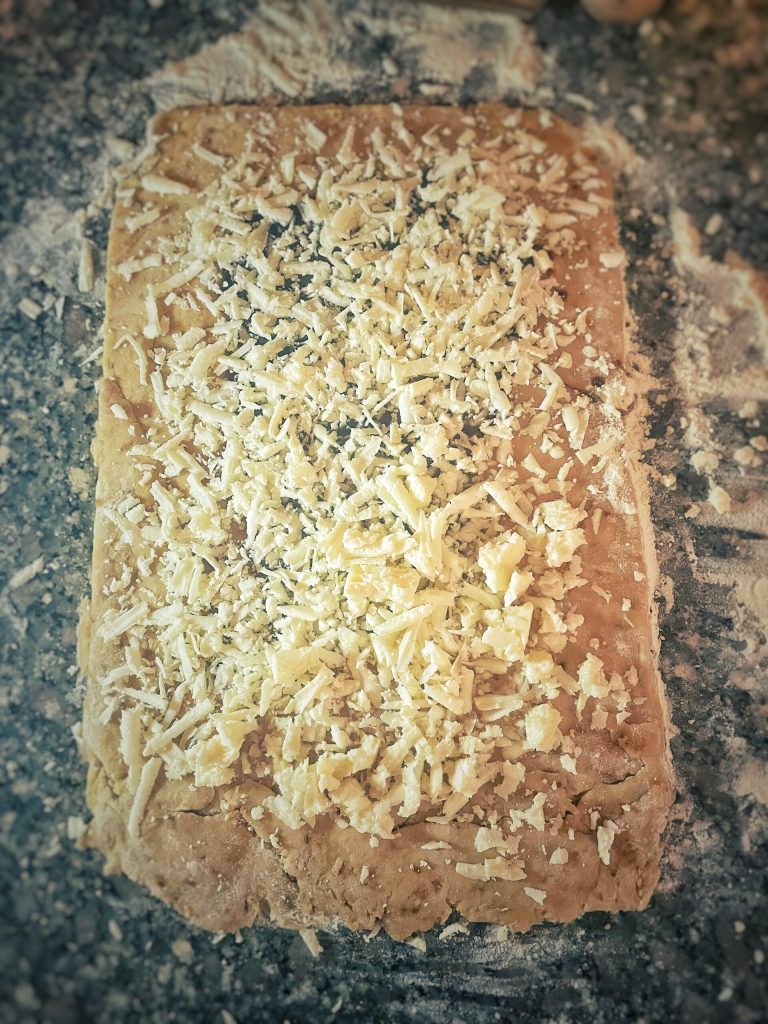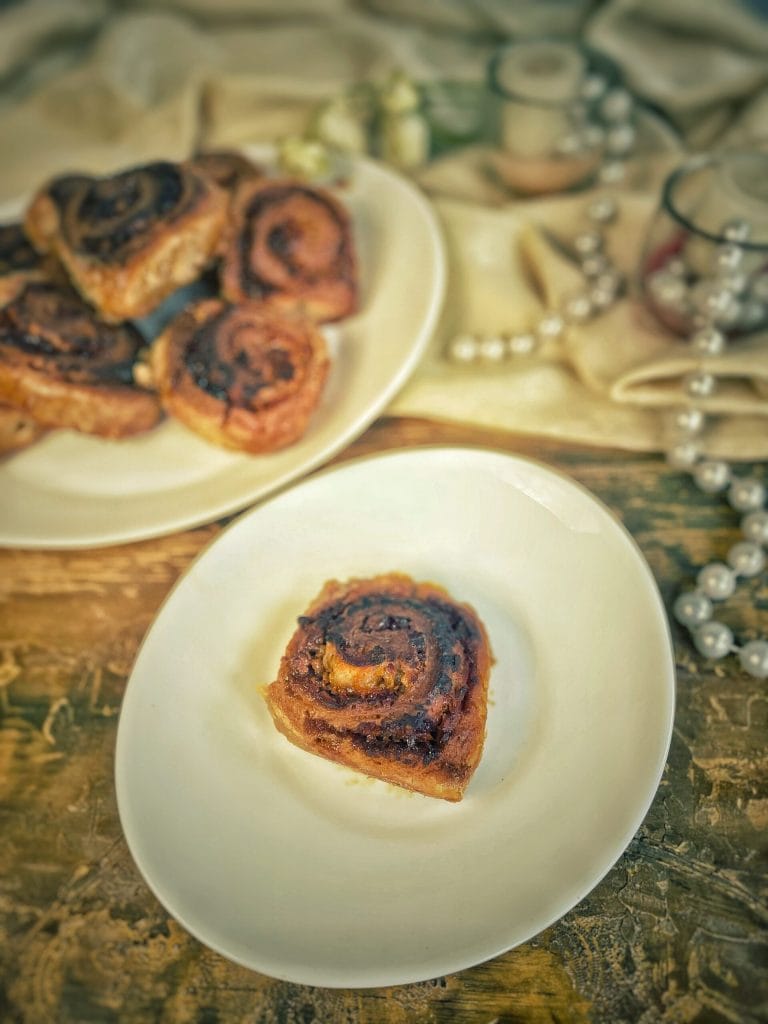The Golfeados, or “golgiaos”, are part of the sweet traditions of Venezuela.
They are buns, very soft and spongy shell-shaped, flavored with anise seeds, filled with Llanero cheese and panela syrup.
It is difficult to determine the specific origin of the golfeado. According to oral tradition, it originates from the parish of Petare, a town that, in the first half of the last century, was a center far from other districts and where many travelers stopped to stock up on food.
According to popular tradition, the name “golfiao” or “golfeado” was born more than a century ago at the El Hoyo de las Tapias coffee plantation, which supplied coffee to Caracas.
The coffee comes from a snail-shaped seed and the farmers called it ‘golfiao’.
The recipe first spread in the towns of Sabana Grande, Palo Verde, el Junquito, and Los Teques and today is available in every corner of Venezuela, being one of the favorite delicacies of Venezuelans.
The dough is rolled into a shape resembling a snail, so much that it looks like cinnamon rolls, and in its folds, it is filled with a mixture of grated panela – called melao de papelón – and white Llanero type cheese, flavored with anise and baked.
Usually, Golfeados are accompanied by a slice of queso de mano, a type of fresh, salted, and soft cheese also typical of Venezuela.

- Difficulty: Medium
- Cost: Economical
- Rest time: 2 Hours 40 Minutes
- Preparation time: 10 Minutes
- Portions: 16 Pieces
- Cooking methods: Stove, Oven
- Cuisine: Venezuelan
- Seasonality: All seasons
Ingredients
- 6 1/3 cups flour
- 1.1 lbs Llanero cheese (or feta, fontina, asiago)
- 1 3/4 cups whole milk
- 9 tbsps butter (melted)
- 3/4 cup sugar
- 1 tbsp dry yeast
- 2 eggs
- 1.1 lbs panela
- to taste anise seeds
- to taste salt
Steps
➡️In a pot with 200 ml of water, cook the panela over medium heat until it reduces and becomes very thick (melao de papelón).
➡️ Grate the llanero cheese and mix it with 1 1/4 cups of warm milk with a tablespoon of sugar and the yeast. Let it rest for 10 minutes.
➡️ In a bowl, put the flour, the rest of the sugar, the anise seeds, the beaten eggs, the melted butter, and the yeast, and mix for 5 minutes.
➡️ Add the salt, knead for another 5 minutes, cover, and let rest for half an hour.
➡️ Roll out the dough in a rectangular shape, cover it with the melao de papelón – set aside some for brushing at the end – and the grated cheese, leaving an edge free to seal.

➡️ Roll it up and cut it into 16 rolls, place them on a greased baking sheet, and let them double in size.

➡️Mix 70 ml of melao de papelón with 150 ml of milk.
➡️ Put them in the oven for 15 minutes at 356°F, add the panela and milk mixture, and bake for 10 minutes.
➡️ Once baked, brush them again with the remaining melao de papelón.
The history of Golfeados
According to Fran Suárez, at the beginning of the 20th century, several families from the Canary Islands settled in Petare, introducing Venezuelan bakery products from their home country and mixing them with Venezuelan ingredients, giving rise to the “golfiao”, the original spelling of this sweet.
Similarly, according to Suárez, the main families who promoted this sweet were the Duarte and the Figueras.
Subsequently, in the 1950s, Petare underwent an urban transformation that encouraged the emigration of these Canary Islanders, thus reducing the production of this bread.
However, later various Portuguese migrants revived this sweet in their bakeries, renaming it “golfeado” and adding a queso de mano as an accompaniment
FAQ (Frequently Asked Questions)
What is Llanero cheese? What cheese can I substitute it with?
The Queso Llanero (plain cheese), is the most popular cheese in Venezuela.
White, hard, semi-processed.
It originates from the savannah of Venezuela, where refrigeration did not exist; thus, this cheese is aged and enhances its flavor and aroma over time.
Also known as “queso duro” (hard cheese), it is white and salty.
It can be consumed grated, but also grilled and fried.
Or grated on Venezuelan dishes like stuffed arepas, cachapas and, indeed, as a filling for golfeados; on caraotas (or beans), patacones and the Venezuelan classic, pabellón.
Or be used also in creamy sauces to add texture and flavor.
It can be substituted with feta, fontina or asiago.
Or you can buy Llanero and other Venezuelan cheeses by contacting the Instagram profile: Formaggioartigianalevzla .
What is panela?
Panela (also known in various Latin American languages by names such as atado dulce, chancaca, empanizao, panocha, papelón, piloncillo, rapadura, or raspadura) is a food product obtained from the juice of sugar cane (the so-called guarapo), subjected to high-temperature boiling and evaporation.
A viscous molasses is obtained, which is then poured into small molds where it is allowed to dry.
The result is solid lumps of sucrose and fructose, also containing calcium, iron, phosphorus, and ascorbic acid.
It is basically unrefined cane sugar, which therefore retains all the original substances.

